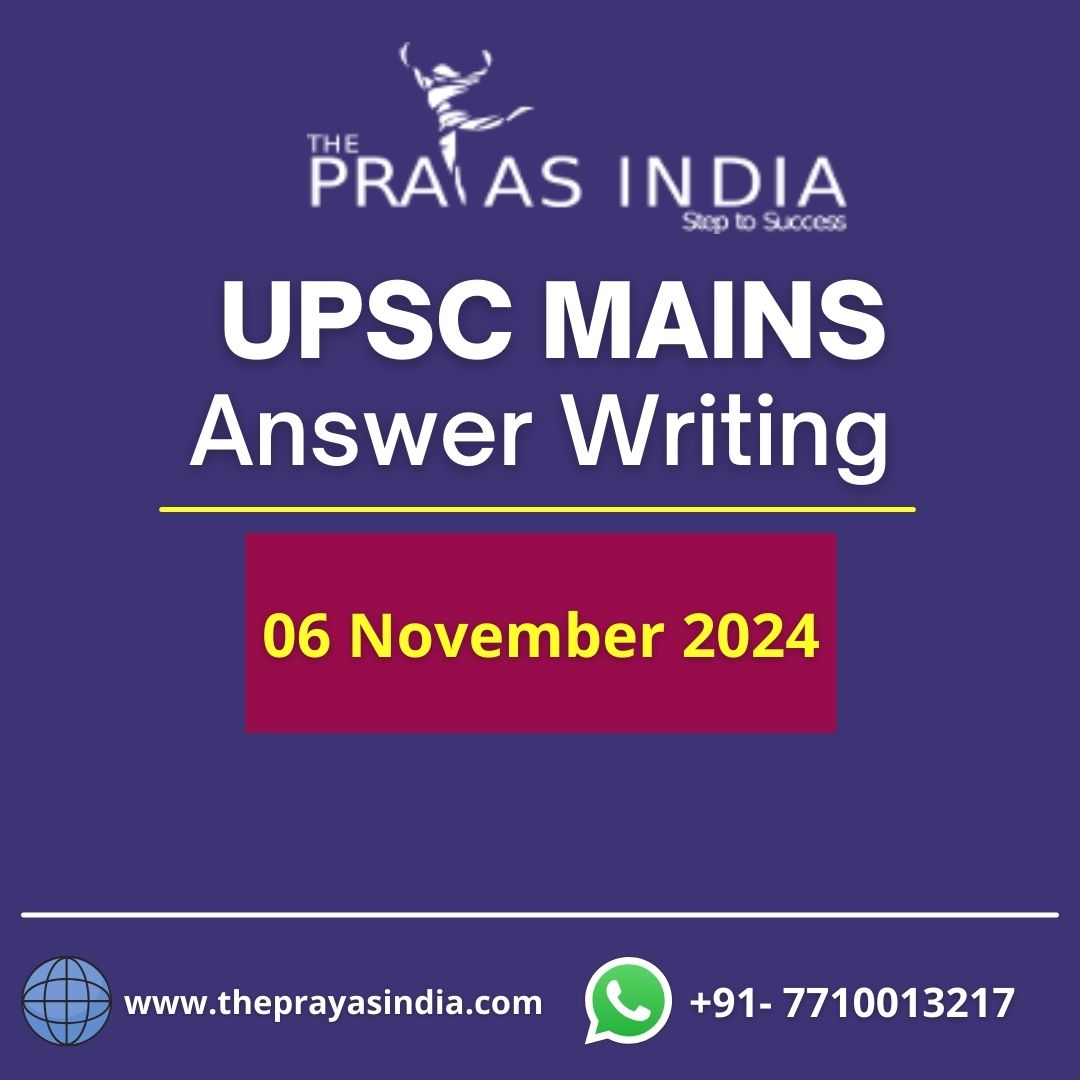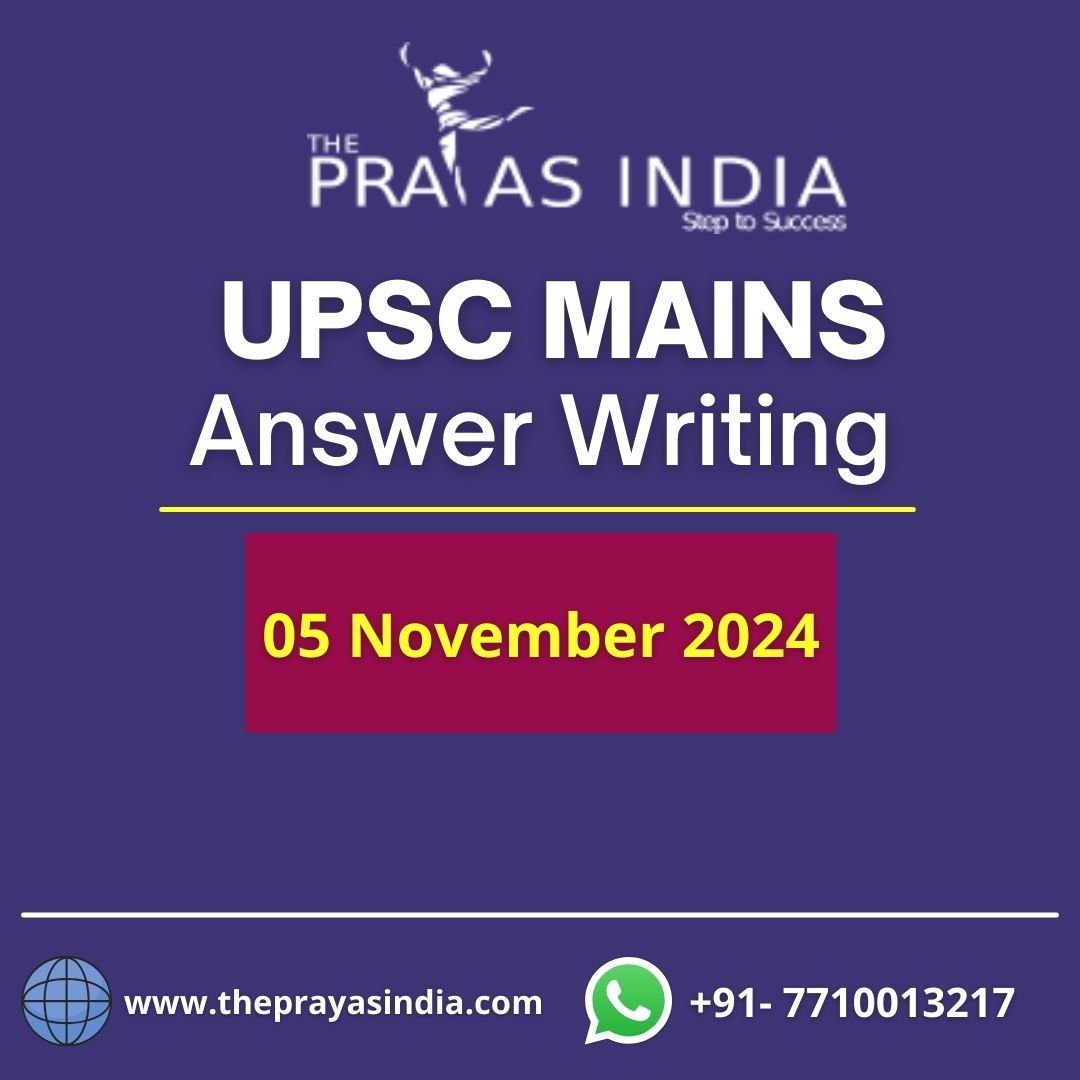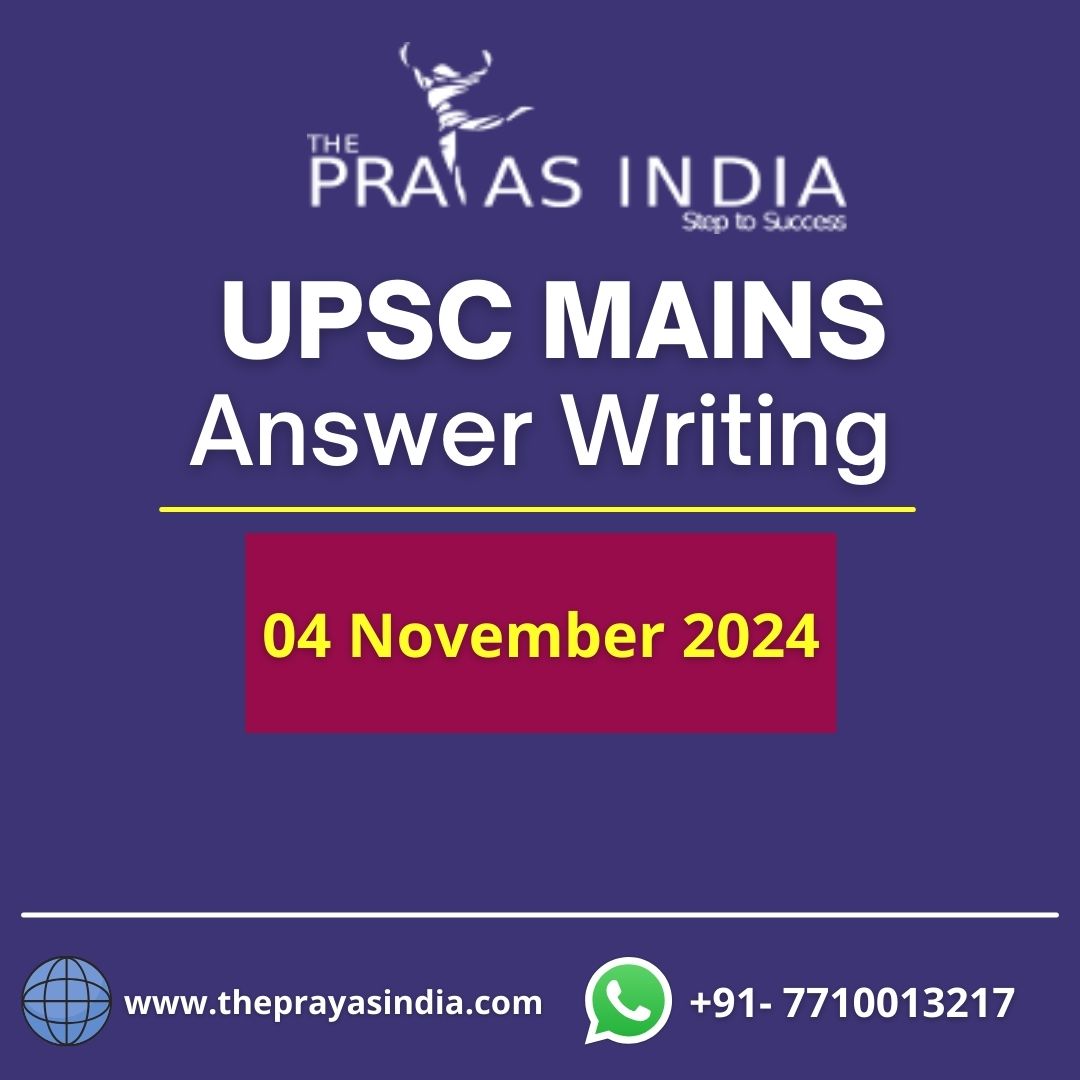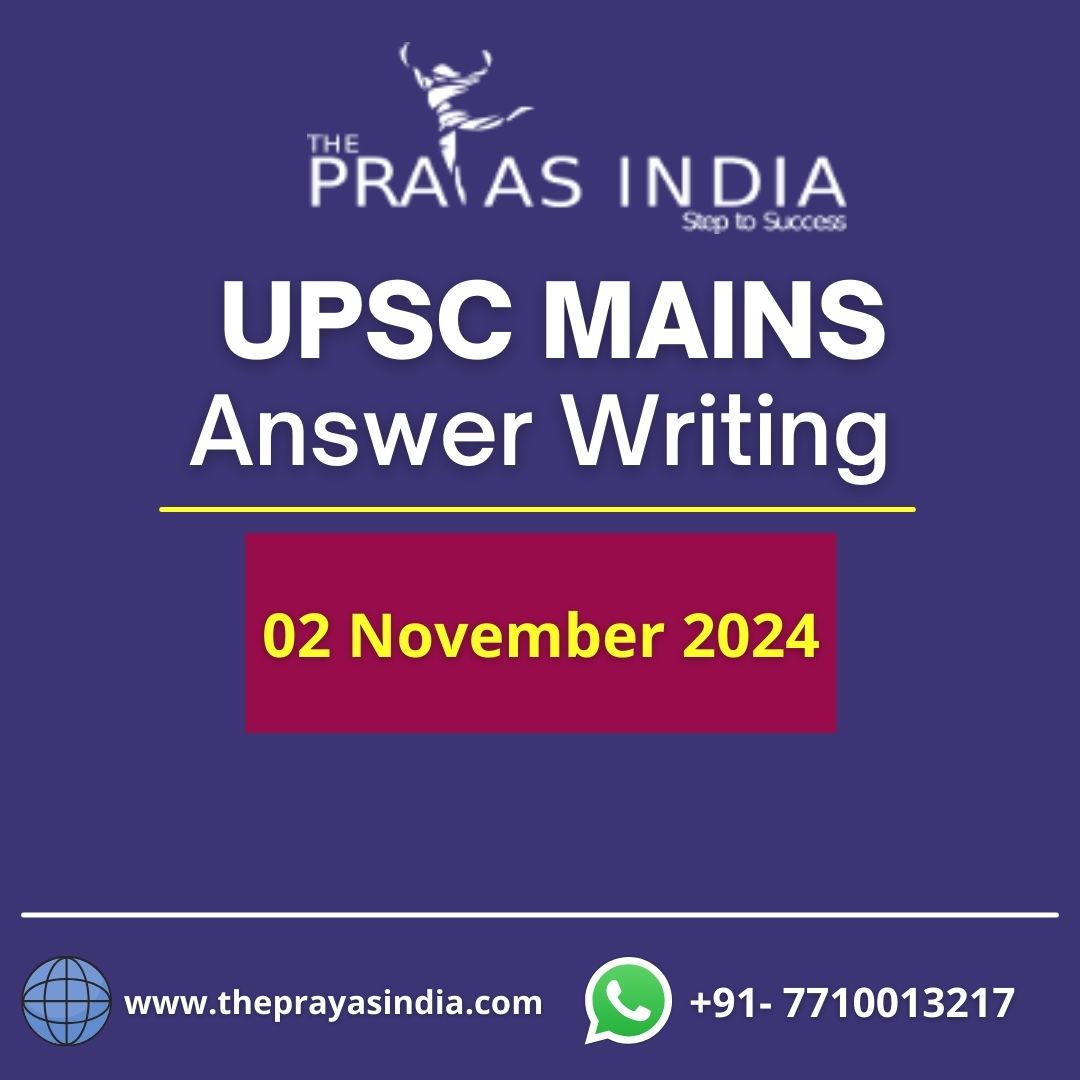MAINS DAILY QUESTIONS & MODEL ANSWERS
Q1. The right to marriage is a fundamental human right that is upheld by the Indian constitution but not by the country’s general legal system or the approval of the community. Do you agree?
GS II – Government Policies and Interventions
Introduction:
- Both a human right and a constitutional right, the right to marriage. In terms of the right to begin a family, it is specified in the Human Rights Charter. It is available under Article 21 of the Indian Constitution as the right to life and personal liberty.
In support of the constitution:
- The Supreme Court of India ruled in the Right to Privacy Case of 2017 that maintaining personal intimacies, the sanctity of family life, marriage, procreation (reproduction), the home, and sexual orientation all fall under the definition of privacy. Thus, the right to personal privacy extends beyond marriage to include forbidden relationships like same-sex unions.
Indian customary law:
- However, India’s standard laws don’t exhibit the same passion.
Impedes interfaith union:
- Prohibition clauses in personal laws: For instance, the Hindu Marriage Act forbids marriages between even distant cousins, called sapindas.
- The Special Marriage Act, which was designed to make it easier for interfaith couples to wed, has provisions that actually forbid it. The’marriage officer’ of the district in which one of the parties has resided for at least 30 days should receive notice from the parties to an intended marriage.
- The announcement must be recorded in a “Marriage Notice Book” that is available for public sight. The counterpart in the district where the party maintains a permanent residence must receive a copy of it.
- Additionally, it gives everyone the opportunity to express their opposition to marriage on the grounds that it violates one of the requirements for a legal union.
- prohibits homosexual marriage: There is no law that permits intra-sex unions. The Special Marriage Act (SMA) and the Foreign Marriage Act (FMA) have been the subject of two separate petitions by same-sex couples asking the Delhi High Court to rule that all couples, regardless of gender identity and sexual orientation, should be subject to the SMA and FMA.
- The primary issue is that “marriage is not defined, in special marriage act.”
Not supported by societal sanctions: Society uses a variety of tools to impose its standards on people:
- Honour killings and other forms of violence are committed to stop couples from voluntarily getting together.
- Social exclusion: When an inter-caste, inter-religious, or intra-sex couple resides in a community, they are frequently socially excluded by the community, which further instills dread in the community.
- Religious Sanctions: It is frequently thought of as a religious obligation to stop such illegal partnerships.
- Patriarchal Mindset: It is crucial in India because people deny girls the freedom to select their life spouse.
Conclusion:
- Although there are many reasons to believe that the right to marriage is still not protected by the law, including societal fear, recent judicial precedents have opened the door for its implementation. Cases like the Right to Privacy case and the LGBTQ Case (Naz foundation case) have expanded the right to life. Additionally, some segments of society have called for a uniform civil code (Article 44), which may eventually result in a number of reforms.
Q2. Despite India’s ability to provide “Housing for All,” there remains a demand and supply imbalance in the country’s housing market. What are the causes and effects of this imbalance? Also, critically evaluate the effectiveness of the Pradhan Mantri Awas Yojana in this regard.
GS II – Government Policies and Interventions
Introduction:
- In the recent years, there has been an increase in unsold units across the country, with one estimate placing their value at over?4L Crore. On the other hand, according to the Global Homelessness Statistics Report, around 80Lak families still lack a decent living home with a functioning toilet or are homeless. This is because the majority of homes that are built are either middle income section homes or luxury homes. However, the greatest demand in India is from lower income families.
Causes of the mismatch between supply and demand:
- Unaffordability of Affordable Homes: With a median family income of just 11,000 rupees in India, 50% of the population cannot afford a metro area’s Affordable Home, which would cost more than 10 lakh rupees.
- Real estate investment demand drives up housing prices, pushing them out of reach for average consumers.
- Real estate companies catered more to investment demand than to real demand, which led to a situation where most stalled projects are solvent but are struggling for liquidity. After 2015, when the liquidity for investment demand dried up, real estate prices crashed, which significantly reduced the sector’s appetite to build more.
- Bad Planning: Over time, it has become clear that India’s city plans lack proper consideration for the needs of lower income groups, allotting much less space than necessary for cheap housing, forcing those individuals to live in slums.
The effects of this discrepancy are:
- Development of Slums in Urban Areas: It is estimated that 78 million people, or around 17% of the world’s slum inhabitants, reside in India.
- Homelessness in Rural Areas: People are compelled to live in kutchha huts, which are composed of mud and husk, in rural areas.
- Reduced living standards and lack of access to essential services: People are compelled to live without power, a sewer connection, or tapped water.
- Health Issues: Due to the close proximity of houses and inadequate sanitation, slums are notorious for being the superspreaders of epidemics. For instance, early this year, SARS CoV-2 spread rapidly across Dharavi, the largest slum in the world.
- Against Right to Life: When a person is made homeless and made to live in a pitiful condition, their right to a good environment and their right to live with dignity are infringed.
- In this context, Pradhan Mantri Awas Yojana (PMAY) is a crucial government of India programme that intends to provide ‘Housing for All’ by the year 2022.
- PMAY-G, formerly known as Indira Awaas Yojana (IAY), is the Pradhan Mantri Awaas Yojana for grains.
- The Rajiv Awas Yojana has been replaced with the Pradhan Mantri Awas Yojana- Housing for All (Urban) Mission.
- Success of Pradhan Mantri Awas Yojana (PMAY – G): Under PMAY – Gramin, the government constructs over 3 million homes yearly in rural areas, and as of April 2020, 1.40 million homes have been finished.
It entails:
- 1,20,000 units of assistance per unit in normal areas and 1,3 lakh in hilly states and challenging places;
- A toilet construction grant of?12,000 under the Swachh Bharat Mission
- Support for 95 person days in hilly states and challenging areas under MGNREGS, and 90 person days in plain areas, through convergence.
- A supplemental loan of up to Rs. 70,000
Success of PMAY-U: Its four sub-schemes include:
- Redevelopment of existing slums: with a grant of?1 lakh per dwelling,
- The Credit Linked Subsidy Scheme (CLSS) for Weaker Sections has an interest rate subvention of 6.5% for EWS/LIG categories such that the current interest payable is less than 4%.
- In projects where 35% of the homes are required to be for EWS category, central aid at 1.5 lakh per EWS house is provided;
- ?1.5 lakh per house for EWS category in slums or otherwise if states/cities develop a project is the subsidy for beneficiary-led individual house building or upgrading (BLC).
- This would increase demand for steel and cement, which it depends on, which would increase employment opportunities as well. The construction industry is also the second-largest employer after agriculture.
Conclusion:
- PMAY is a crucial component of achieving Sustainable Development Goal 11, which is to “Make cities and human settlements inclusive, safe, resilient, and sustainable.” India also needs to keep up its efforts in this area because it is predicted that, by 2030, we will need to build 700 to 900Mn square metres of new residential and commercial space annually to accommodate the country’s expanding population.




